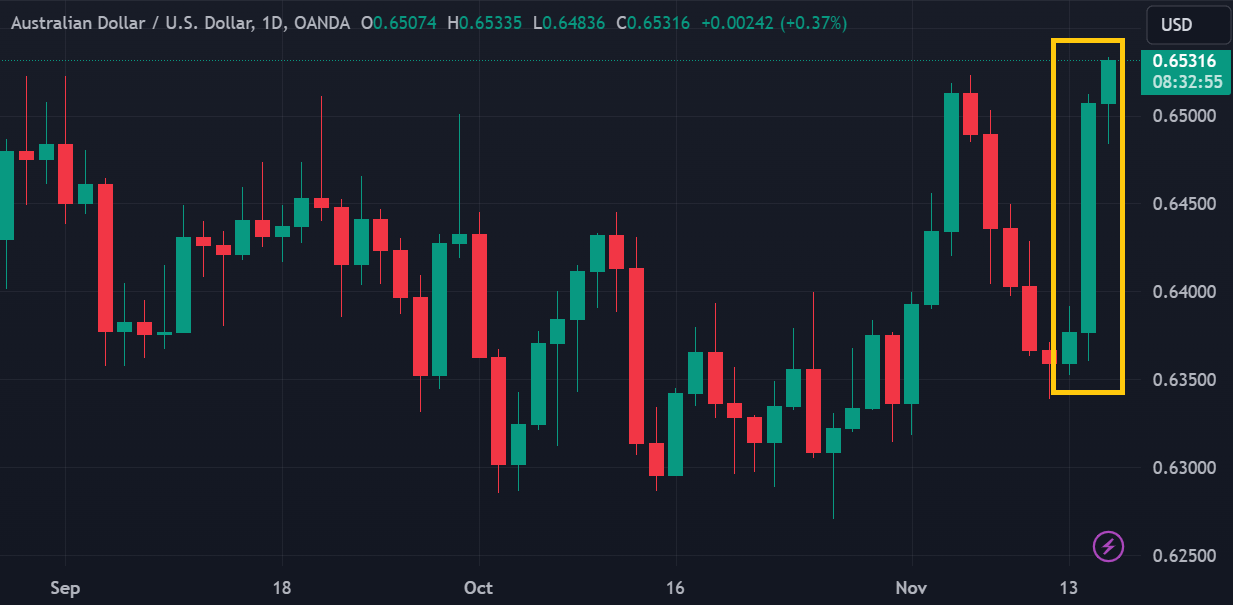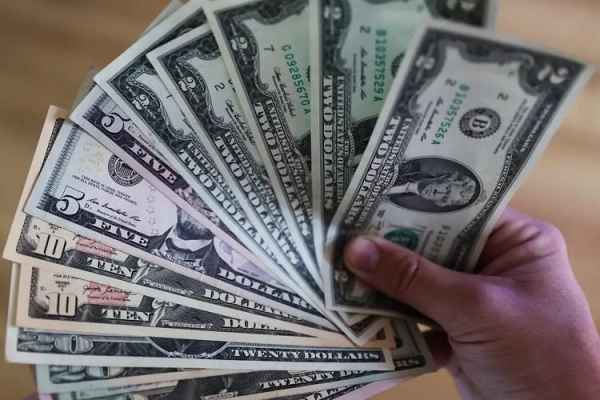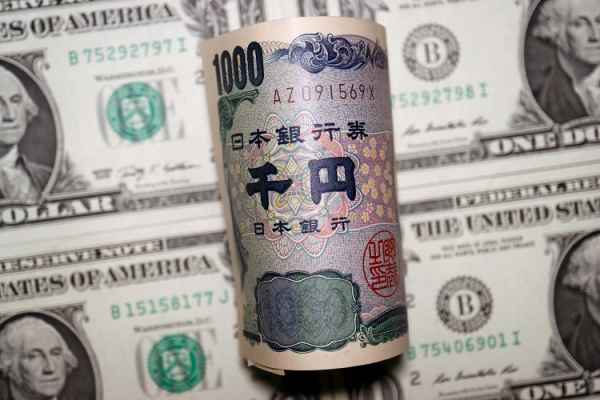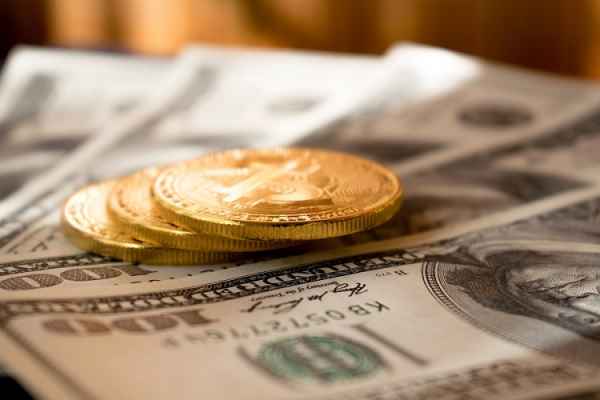Three main factors drove the AUD/USD rally, namely US inflation data, China's economic improvement, and Australian wage data.
The Australian dollar has performed fantastically since the start of the week. AUD/USD rallied non-stop until it broke out to the 0.6530s range on Wednesday (15/November), hitting its highest level since August 10. However, the next move is prone to correction.

Three main factors are driving the current AUD/USD rally. First, yesterday's release of disappointing US inflation data has undermined the USD's resilience. Second, most of the Chinese economic data released this morning showed improvement in the October 2023 period. Thirdly, the Australian wage data release showed inflationary pressures remain high.
US inflation data showed price growth of 0.0% in October 2023, while the annual inflation rate slipped from 3.7% to 3.2%. Experts are unanimous in viewing this data as signaling the end of the era of rising US interest rates.
Meanwhile, data from China showed positive economic improvement for its major trading partners. China's industrial production increased 4.6% (year-on-year) in October 2023, while retail sales skyrocketed 7.6% after growing just 5.5% in the previous period.
Australia's Wage Price Index increased by 1.3% in Q3/2023, while the previous period's data was revised up from 0.8% to 0.9%. As a result, annual wage inflation increased from 3.6% to 4.0% when the previous consensus only anticipated an increase of 3.9%.
This kind of inflationary pressure from the people's income side triggered hawkish speculation. Some traders think the data increases the chances of further interest rate hikes by the Australian Central Bank (RBA) soon.
The speculation lifted the Australian dollar, but market analysts still think the RBA's current interest rate has already reached its highest peak.
"Australian wages increased very strongly by 1.3%/qtr in Q3 2023 because of an unusually large increase in the minimum wage. The market is pricing about a half chance of a 25bp rate hike by the Reserve Bank of Australia (RBA) in coming months," says Joseph Capurso, a strategist at Commonwealth Bank of Australia. "We expect pricing for another RBA rate hike to unwind and pull AUD/USD lower."
After the end of the RBA rate hike period, there are very few factors from within Australia that can lift the Aussie. Its future fluctuations will likely be more influenced by reports from the US, China, and general global market sentiment.

 Dedicated FREE FOREX VPS
Dedicated FREE FOREX VPS Free FOREX Virtual Private Server
Free FOREX Virtual Private Server MT4 Demo Contest, Get $500
MT4 Demo Contest, Get $500 Sign Up for an Account, Claim 60% Deposit Bonus
Sign Up for an Account, Claim 60% Deposit Bonus Free MT4/MT5 VPS 2024
Free MT4/MT5 VPS 2024 Send E-mail and Get Free Merchandise
Send E-mail and Get Free Merchandise $1K Refer a Friend Bonus for Pepperstone Pro clients
$1K Refer a Friend Bonus for Pepperstone Pro clients Maximize Your Earnings with 100% Deposit bonus
Maximize Your Earnings with 100% Deposit bonus Trade to Win, $5,000 Monthly Demo Contest
Trade to Win, $5,000 Monthly Demo Contest Claim 30% + 15% Deposit Bonus from LiteFinance
Claim 30% + 15% Deposit Bonus from LiteFinance






